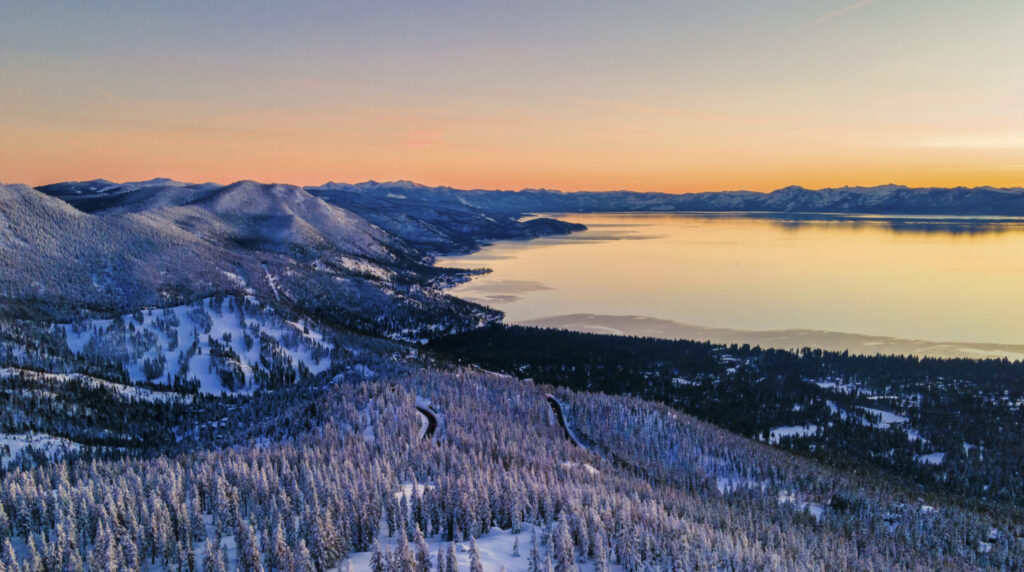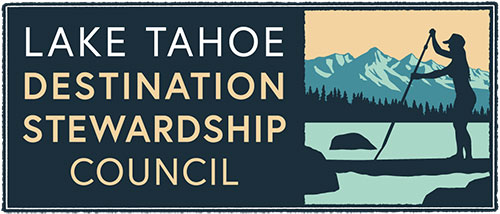Smartest Forest Fund

Partners: U.S. Forest Service, California Tahoe Conservancy, Nevada Department of Forestry, Tahoe Forest & Fuels Team, Tahoe Central Sierra Initiative
Fundraising Goal: $5,000,000
Both California and Nevada have experienced record-breaking wildfires in recent years. In 2021, the 222,000-acre Caldor Fire came within miles of destroying homes, businesses and natural resources right here in the Lake Tahoe Basin.
The threat of catastrophic wildfire is increasing throughout the West in part because of unhealthy, overly-dense forests and pervasive tree mortality. In the Tahoe Basin alone, the number of burn piles and dead and dying trees have skyrocketed into the hundreds-of-thousands, with an estimated 692,000 tree deaths since 2010. In addition, forest density has increased so substantially over the past several decades that trees in the Basin are now competing for precious resources, including water.
For all of these reasons, the Tahoe Fund has identified forest health as our number one priority.
In 2019, we launched the Smartest Forest Fund, a sub-fund of our Environmental Venture Trust, to use philanthropy to drive innovation through seed funding. With this Fund, we are investing in promising new ideas and pilot projects. Some will work; some may not. But supporting them is critical to finding and scaling meaningful solutions.
Download our Smartest Forest Fund brochure.
Smartest Forest Fund from Tahoe Fund on Vimeo.
Smartest Forest Fund Projects
Working alongside our public agency partners and donors, we plan to make Tahoe’s forest the smartest forest on the planet. To date, the Smartest Forest Fund has supported the following projects.
Innovation & Technology
Tahoe-Truckee BurnBot Pilot – A two-phase pilot bringing an innovative suite of tools to the region that will increase the pace and scale of forest restoration. Phase One showcased BurnBot’s remote-operated mastication technology, while completing a 22-acre treatment in just three days in Incline Village. Phase Two will take place in fall 2024 and will showcase BurnBot’s prescribed fire robot. This technology allows crews to complete work more safely and in a fraction of the time, with less impact to the environment.
The Tahoe-Truckee BurnBot Pilot pilot is the result of a collaborative effort among multiple partners and across sectors. It was co-funded by the Tahoe Fund, Martis Fund, Tahoe Truckee Community Foundation and Lake Tahoe Restoration Act, and co-sponsored by the Tahoe Fire & Fuels Team, North Lake Tahoe Fire Protection District, Tahoe Resource Conservation District, and the Tahoe Regional Planning Agency. To learn more about BurnBot, please visit www.burnbot.com.
Land Tender – We awarded a grant to Vibrant Planet for the Tahoe portion of Land Tender, a software system that utilizes high-definition imaging and artificial intelligence to reduce the time it takes to plan forest treatment projects from years to months. Land Tender maps landscapes with great specificity, and in turn, helps land managers and communities create and prioritize projects based on desired outcomes. The Tahoe Fund’s early investment in Land Tender helped secure over $500,000 in state funding for this effort.
Kodama Systems – This year, the Tahoe Fund made its first-ever investment, joining Kodama Systems’ $5.95 million seed round alongside two environmentally-focused venture capital firms. Kodama’s mission is two-fold: 1) Automating forest health treatments, and 2) Creating high-value opportunities for wood utilization. We are excited to be a part of Kodama’s work, and believe it will change the game for the better. The Tahoe Fund’s early support of Kodama helped the company secure a $300,000 Cal Fire grant to retrofit key machinery for teleoperation.
California Forest Observatory – We provided funding alongside the Gordon and Betty Moore Foundation for Salo Sciences’ efforts to build the California Forest Observatory, an aggregated data platform that maps wildfire risk in real-time, reduces planning time for forest restoration projects, and supports emergency operations.
Acoustic Owl Monitoring – The current process for detecting endangered owls in the forest takes about two years and significantly lengthens the approval time for forest health projects. We awarded a grant to the U.S. Forest Service to develop a more effective protocol that combines acoustic monitoring and automated devices that will cut detection time in half.
Workforce & Education
Forestry Student Scholarships – To incentivize careers and bolster diversity in the critically understaffed forestry field, we offered a scholarship to every student in the inaugural year of Lake Tahoe Community College’s new Forestry Education & Job Placement Program. After announcing these scholarships, the program saw enrollment climb to its maximum capacity.
Social Science Workshop for the Tahoe Fire & Fuels Team – Thanks to support from NV Energy, we sponsored a workshop, featuring Forest Service social scientist Dr. Sarah McCaffery, to help over 75 fire professionals learn how to more effectively engage with the community around wildfire issues.
Caldor Forest Treatment Study – Many believe that forest thinning treatments completed in Tahoe years ago helped stop the Caldor Fire from entering the Basin. We funded a study to figure out whether this is true, and if so, what worked and what could have been done better. We hope the findings will help guide land managers toward effective treatment methods, and also encourage lawmakers and regulators to continue to fund and authorize such treatments.
Biomass Utilization
Tahoe Forest Products Sawmill in Carson City, NV – We brought together a private funder and the Washoe Tribe of California and Nevada to build the first new sawmill in decades within ten miles of the Tahoe Basin. The sawmill will create nearly 100 jobs, and seek to hire as many tribal members as possible. Once it’s fully built out and operational in 2026, the sawmill will process 40-50 million board feet of lumber per year. Notably, the need for biomass offtake sites is so great that the sawmill regularly fields inquiries from organizations seeking responsible destinations for felled timber, including from nearby forest fires like Caldor.
Log Resource Study – To help show potential investors that new wood utilization facilities near Tahoe, such as sawmills and biomass facilities, would have access to enough material to be profitable, the Smartest Forest Fund commissioned a study covering the 75-mile radius around the Loyalton Biomass Facility. Investors, including those behind the Carson sawmill, have since cited this study in their decisions to move forward with key wood utilization projects in the region.
Carson City & Loyalton Biomass Facilities – The Tahoe Fund is supporting the Nevada Division of Forestry’s efforts to reopen the Carson City biomass facility. We’re also working with private investors to get the Loyalton biomass facility back up and running. Once operational, these sites will create new and badly needed offtake opportunities for excess timber in the Basin.
Senator Cortez Masto’s Biomass Utilization Group – At Sen. Cortez Masto’s request, the Tahoe Fund has facilitated a series of meetings with individuals and companies pursuing biomass projects in Nevada. The goal is to identify funding, policy and regulatory needs that Sen. Cortez Masto can champion at the federal level.
Community Preparedness
Community Hardening & Resident Preparedness – We awarded a grant to the Tahoe Resource Conservation District (RCD) to revamp its community hardening and preparedness programs. The goal is to better identify which residents and neighborhoods need assistance and what they need it for. This will allow the Tahoe RCD to tailor its programs to specific, on-the-ground needs, with an emphasis on providing support to our most vulnerable populations.
Download our Smartest Forest Fund brochure.
